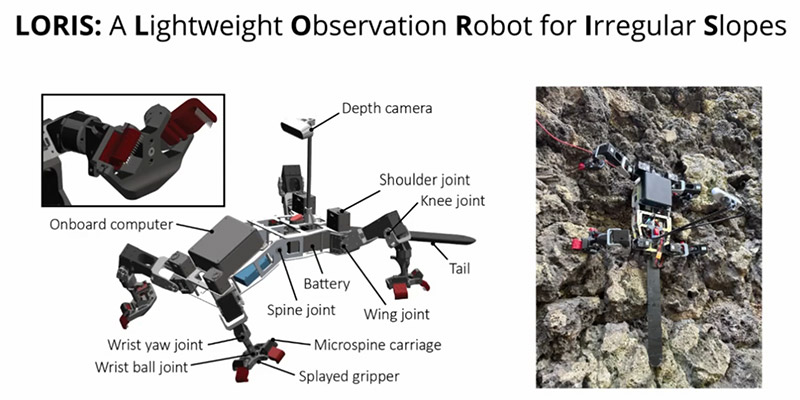Create your CubeMars account


In the field of robotics, each new breakthrough sparks limitless creativity and imagination. Today, we delve into a revolutionary quadrupedal climbing robot developed by Carnegie Mellon University (CMU) — LORIS (Lightweight Observation Robot for Irregular Slopes). For robotics enthusiasts, this robot is an exciting case study, demonstrating how future robots can interact with and navigate complex environments.
Design Concept of LORIS
The design of LORIS is inspired by insects and reptiles in nature. These creatures exhibit exceptional climbing abilities on irregular surfaces, inspiring researchers to develop a robot capable of similar feats. Each leg of LORIS is equipped with microspine grippers that can latch onto rocks, bark, and other irregular surfaces, enabling the robot to move freely in complex terrain.
Mechanical Design and Technical Features
LORIS’s uniqueness lies in its microspine grippers. Each gripper consists of multiple tiny hooks that can catch onto small protrusions and indentations, providing strong grip strength. This design not only allows LORIS to climb steep rock faces but also to traverse environments inaccessible to other robots.
Additionally, LORIS is equipped with a depth-sensing camera and an intelligent microprocessor, enabling it to sense its environment in real-time and adjust each leg's movement accordingly. Through complex algorithms, LORIS can intelligently plan each step, maintaining balance and ensuring stable grip.
Research and Development
The development of LORIS is the result of the dedicated efforts of the team at CMU’s Robomechanics Lab. The team, consisting of researchers like Paul Nadan, Spencer Backus, and Aaron M. Johnson, succeeded in creating a robot that can freely climb irregular slopes through continuous experimentation and optimization.
To achieve this, researchers employed a technique called Directed Inward Grasping (DIG). This technique, inspired by insect climbing methods, involves the grippers closing inward to secure the surface, providing stable support. LORIS’s design is not only lightweight and efficient but also achieves an ideal balance between energy consumption and movement speed.
Conclusion
LORIS is not only a significant breakthrough in robotics but also a case study worthy of attention and learning for robotics enthusiasts. It demonstrates how inspiration from nature can be transformed into engineering design and how innovative technology can achieve outstanding performance. This research by CMU provides valuable experience and insights for the future development of robotics, inspiring more individuals to engage in this promising field.
For further reference:
1.CMU Robomechanics Laboratory
2.Robotics and Automation
3.Nature-Inspired Robotics